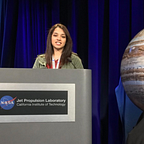SpaceX makes history; yet another smooth PSLV launch and other space news
Space News Recap | June 19 — June 25
Solar System
Jupiter
Juno has found that beams of electrons shoot upwards from Jupiter’s poles, above the aurorae.
Uranus and Neptune
NASA has announced that it wants to send a mission to study Uranus and Neptune, giving rise to all kinds of “probing deep into Uranus” headlines over the past few days. There are four mission ideas including a fly-by to study either or both planets including a fly-by and an orbiter that would study the planets’ gaseous atmospheres and their ring and moon systems.
Planet Nine
A new study that’s come out of the OSSOS survey claims that Planet Nine might not exist after all. According to this study, the observations made that led to the conclusion of Planet Nine were not free of bias, leading to erreneous results.
Launches
ISRO
ISRO launched 30 satellites atop a PSLV-XL on Friday, including the 712kg Cartosat-2E for earth imaging. There was also a student satellite from a university in the Kanyakumari district aboard the rocket.
SpaceX
SpaceX made history by launching back-to-back rockets in a matter of 72 hours. The Falcon 9’s first stage landed back on the drone ship Just Read The Instructions, making it SpaceX’s thirteenth successful landing.
https://www.instagram.com/p/BVxysOlA04j/
Orbital ATK
The agency successfully performed a static test fire of the next generation human spacecraft, Orion human spacecraft. Orbital works with Lockheed Martin and NASA on this project.
People
Stephen Hawking
Professor Hawking has made yet another claim that the human race is doomed, this time if we don’t colonize the moon and Mars.
Extrasolar News
Exoplanets
European Space Agency (ESA) has announced that it has selected the Laser Interferometer Space Antenna (LISA) mission for development. LISA will be a gravitational wave astronomical observatory.
NASA has released the full list of Kepler telescope’s exoplanet findings and the total confirmed number of planets now stands at 4,034. Out of these, nearly 50 planets are in habitable zones.
